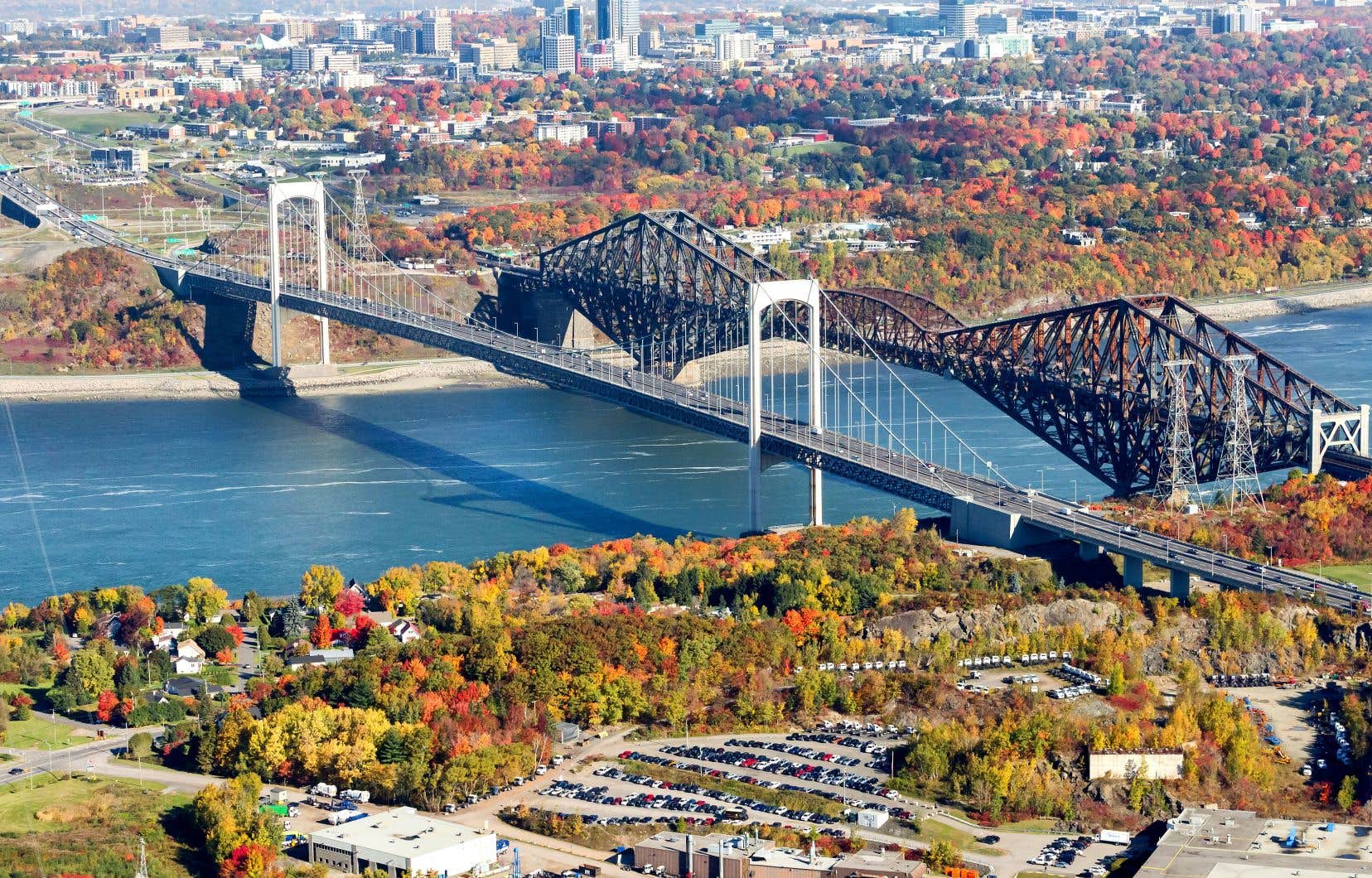Fearing the fragility of the Pierre-Laporte bridge in the event of an earthquake, two experts presented on Monday a “new” project for a third link. However, an almost identical scenario has already been studied – and ruled out – by the Ministry of Transport in 2021.
In an analysis still available online, the ministry examined a proposal for a bridge and tunnel that would start from Chemin des Îles, in Lévis, and then transform into a tunnel to Boulevard Pierre-Bertrand, on the Quebec side. Of the four scenarios studied at the time, this one received the worst rating. In more than half of the cases, it did not meet the criteria studied “at all”.
In the ministry’s table, all the boxes in the “Acceptability and land use planning” section are red. The project has also not passed the milestone in terms of winter viability, road safety or traffic flow, in particular.
The scenario was almost identical to that put forward on Monday, in an open letter to the Sun, by engineer Daniel Toutant and engineering professor at Polytechnique Bruno Massicotte. The two experts propose the construction of a six-lane cable-stayed bridge which would follow the Chemin des Îles in Lévis. This would then turn into a tunnel on the Quebec side, in the historic Anse au Foulon sector. It would turn towards the Saint-Sacrement coast, explained Mr. Massicotte in an interview with Duty.
The sketches provided by the professor were designed by Mr. Toutant in 2022, and they initially predicted that the tunnel would end instead on Charest Boulevard. However, it would be “more acceptable and more effective for it to go out at the end of Saint-Sacrement Boulevard,” declared Mr. Massicotte at Duty. He said he hoped that the Caisse de dépôt et placement du Québec, which obtained a mandate from the Legault government to identify a structuring public transport project, would take his proposal into account.
Unlike the sector between Saint-Sacrement Boulevard and Pierre-Bertrand, therefore, the scenario is the same as that studied by the ministry, points out Fannie Tremblay-Racicot, professor at the National School of Public Administration. However, not only was this scenario rejected, it is “contrary to current public policy objectives, which are to redevelop the banks and benefit the population,” she stressed.
Quebec has invested millions in the Samuel-De Champlain promenade, where the bridge proposed by MM. Massicotte and Toutant. “We shouldn’t cut that,” agrees the first in an interview. “The bridge will go over it. It will enter the mountain, not high up on the top of the coast, but somewhere in the middle of the cliff,” he detailed. As for the site of Anse au Foulon — where General Wolfe’s British expeditionary force landed on the morning of September 13, 1759, en route to the Plains of Abraham — the tunnel will not affect it, believes Mr. Massicotte, since it “will arrive below, at the level of Boulevard Champlain”.
Seismic risks?
MM. Massicotte and Toutant qualify their project proposal as a “second link”, since “the old Quebec bridge certainly does not have the capacity to absorb the additional traffic that would result from a closure, even partial, of the Pierre-Laporte bridge ”, in their opinion.
But it’s not just the Quebec Bridge that is “old”. The Pierre-Laporte bridge and its north and south interchanges would be at risk in the event of an earthquake, since they were designed at a time when seismic standards “were non-existent,” believes Mr. Massicotte. ” The last [tremblement de terre], it was in 1925. That’s 100 years ago. And we know that approximately every 100, 150 years, we have a [tremblement de terre de] magnitude 6 and more in the corner of Quebec and Charlevoix, so it is a possibility that is there,” declared the professor at Duty. The issue is therefore one of “public safety” in his opinion.
“The question is: what is the problem? », Commented Professor Tremblay-Racicot. “Is the problem that the bridge does not meet seismic standards? Is it true ? This is the first time we’ve heard that,” she continued.
Minister Martine Biron, elected in Chutes-de-la-Chaudière, declared that the proposal from MM. Toutant and Massicotte had to “be part of the reflection”. “From the beginning, I was talking about a replacement link,” she recalled. “Both bridges, at some point, have limits. They are starting to get old, so we have to think about the future. »
Given the safety hazards, why not repair the bridges instead of building a new link? Because “if we close half of the tracks for three years, as we are doing with the Louis-Hippolyte-La Fontaine tunnel in Montreal, it will be a disaster. And that’s if there is no earthquake,” said Mr. Massicotte.
He estimates that his proposal could cost around six billion dollars. “The Champlain Bridge cost $4 billion, so let’s put two billion more,” he suggested. “It is not my primary function to evaluate the costs,” he then clarified, before adding that his estimate did not take into account the construction of an “intermodal station under the rock”. In his project, this station would be equipped with high-speed elevators to reach the surface near the Saint-Charles-Garnier college, in the Saint-Sacrement sector of upper town in Quebec. “It depends on the size [de cette gare]. Do we park one bus under the rock or park 20? » he asked.
With Dave Noel.
